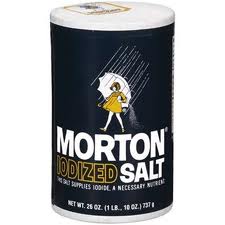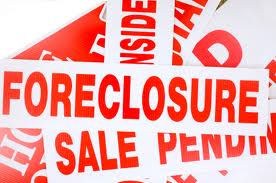Consumer Spending Up? Come on get happy…
Wow, when it comes to our economy, what a difference a month or so makes, wouldn’t you say? I mean, last month the economic news was not good… terrible, even. And to make sure that everyone understood what was up… or, rather down… I wrote about it here, here, and here. To say nothing of here and here.
So, wasn’t I surprised to find that less than a month later, everything economically speaking had completely turned around and we were once again having a “recovery.” Obviously, the ‘Happy News’ folks that have tremendous influence over the mainstream media in this country had been working overtime, so I thought I’d better look things up and set things straight once again.
So, here are a few of the recent headlines:
“Consumer spending drives stronger U.S. growth”
“U.S. Economic Growth Accelerates”
“Economy expands 2.5 percent in the third quarter”
“Where are the recession calls now?”
Ooooh… SNAP!
Why that sure does make one feel happy does it not? Woohoo! Go ahead and click the play button… you’ve got an extra minute or two… Come on get happy!
Okay, so the first claims I wanted to look at were the reports that consumer spending had recently exceeded the expectations of economists, and was providing proof that the economy was once again not in a recession. Consumer spending, or “personal consumption” as the government’s econowonks like to call it, is said to be roughly 70 percent of our GDP.
The bottom-line… much of what the government is reporting is nothing more than a mirage, with the rest either easily explained or not indicative of a growing economy, but rather a shrinking one.
Borrowing…
Let’s start with the government’s claim that total borrowing in September, excluding any meager real estate related borrowing, increased by $7.4 billion. This looked like an extraordinary increase to me, because the prior month, August, reports showed a $9.7 decrease in consumer borrowing, the largest decrease in 16 months.
According to AP…
Total consumer borrowing rose by $7.4 billion in September, the Federal Reserve said Monday. In August, it had fallen by the most in 16 months.
The September increase reflected a 5.8 percent increase in borrowing in the category that includes car and student loans. But the category that covers credit card purchases dropped 1 percent after larger declines in July and August.
To begin with, the $7.4 billion number is NOT seasonally adjusted… they probably didn’t have time to do those calculations. And beyond that apparent oversight, roughly half of the increase came as a result of student loans? Wow, student loans in the fall… go figure. Who would have thunk it?
The other half was auto loans, and that number was easily understood by looking at the average age of U.S. vehicles on the road today, which has surged to 10.7 years, from 8.9 years at the start of the decade, according to R.L. Polk & Co. That’s both an all-time record, and sales resulting from pent up demand, not a growth spurt in the economy.
Oh, and by the way… the other kind of borrowing… you know, the kind that really would indicate that things were looking up for American households, credit card borrowing actually DECLINED by one percent or $627 million.
But, according to the Bureau of Economic Analysis (“BEA”), the increase “primarily reflected positive contributions from personal consumption expenditures,” but a big part of the problem lies in what the government thinks we personally consume. To keep things in nice round numbers let’s assume our GDP to be $14 trillion, and 70 percent of that we’ll call $10 trillion.
So, for example, out of the $10 trillion in personal consumption, you’ll find a little over $2.0 trillion in claims paid by Medicare, Medicaid and providers of private health insurance for things like hospital stays, prescription drugs, doctors, nursing homes, durable medical equipment… all of health care’s goods and services.
Now, clearly consumers aren’t really “spending” these dollars, it’s more like they’re being spent on behalf of consumers. My wife was recently in the hospital for some surgery and our health insurance company will be paying the bill, which I’m sure will be tens of thousands of dollars, but we wrote a check for our deductible, $500. (And, she’s just fine, by the way.)
The government’s GDP calculations also include several categories referred to as “imputed,” which total $1.5 trillion, roughly 11 percent of GDP. Included in the “imputed” category are things that don’t involve any actual money changing hands.
The largest of these is the $1.1 trillion considered “rent” that in theory homeowners pay to themselves to live in their own homes… the government refers to this category as, “imputed rental of owner-occupied nonfarm housing.” As to what this actually means, I have no idea. What I do know is I’ve never written myself a check to cover the rent for living in my own home.
And there’s also a $240 billion entry that’s supposed to cover “financial services furnished without payment,” you know… like the supposed value of services like free checking accounts, or free online banking… to which I can only say… LOL.
There’s also a “social services” category to cover things like spending by religious groups and social advocacy organizations, spending on research and development by universities and other private institutions, and spending by political parties. I understand why this category is included… all of the areas listed above are to some degree funded by individuals making contributions, although government funding is also involved, as is interest income earned on the investments of the organizations themselves.
To call these entries in the GDP calculations “consumer spending” is kind of… what’s the word I’m looking for… oh yeah… goofy. The amounts are not “spent” by consumers; they’re just accounting entries that are used to make the government’s books balance, and they certainly create a situation far too opaque to be any sort of reliable indication that things are looking up.
Still, the casual observer is seeing the headlines proclaim that consumer spending is going nowhere but up… so are they really? The answer is an easy one… of course not. Why in the world would consumer spending be “up” all of a sudden? The only answer is… it wouldn’t. But you have to dig in to find the distortions.
The lion’s share of the overall increase was for services and by “services” the government was talking about necessities: housing and utilities, health care, food services and accommodations, and financial services and insurance. When you consider that the Consumer Price Index (CPI) is up 3.9 percent on an annualized basis, which includes food prices being up by 4.7 percent and energy up by 19.3 percent, it’s pretty clear that we’re not talking growth, we’re talking inflation driven by higher oil prices… which again would tend to reduce consumer spending… at least the kind of spending that matters when talking economic growth.
Additionally, our trade deficit shrunk again, with exports increasing by $31.6 billion, while imports only went up by $7.3 billion… and, like credit card debt, the lower number for imports would point to a reduction in consumer spending, not an increase.
Here are a few other facts that have to be weighing on consumer spending, no matter what the government wants to say…
According to MSNBC News, Most of the unemployed no longer receive benefits
Early last year, 75 percent were receiving checks. The figure is now 48 percent — a shift that points to a growing crisis of long-term unemployment. Nearly one-third of America’s 14 million unemployed have had no job for a year or more.
In the recoveries from the previous three recessions, the longest average duration of unemployment was 21 weeks, in July 1983. By contrast, in the wake of the Great Recession, the figure reached 41 weeks in September. But the economy has remained so weak that an analysis of long-term unemployment data suggests that about 2 million people have used up 99 weeks of checks and still can’t find work.
And there’s more good news behind that…
Number of Americans in poverty at record high
A record number of Americans — 49.1 million — are poor, based on a new census measure that for the first time takes into account rising medical costs and other expenses. Based on the revised formula, the number of poor people exceeds the record 46.2 million, or 15.1 percent, that was officially reported in September.
Without food stamps, the poverty rate would have risen to 17.7 percent, which translates to about 5 million more people. That program was expanded in 2009 as part of the federal stimulus plan; the expansions are now phasing out gradually and will expire completely in 2014.
Best if taken with a grain of salt… or maybe two grains…
Just to give you an idea of how reliable the projections of consumer spending can often be, in a Bloomberg/BusinessWeek from April 9, 2008, the following paragraph appeared:
Some economists think the combination of economic stimulus checks soon to arrive from the federal government and lower interest rates should keep consumer spending from falling off a cliff. “We think consumers will narrowly skirt a downturn despite the recession in the overall economy,” write Richard Berner and David Greenlaw of Morgan Stanley in a just-released report.
So, yeah… nice job forecasting, fellas… we really dodged a bullet there.
The fact is that there are so many ways the numbers reporting consumer spending can be manipulated that it’s completely impossible for anyone to be sure their numbers are right… or even close to right.
On September 20, 2011, an article titled, Consumer Spending Data: If It Is Right, Is It True? had the following to say:
However, so many studies are issued on the subject, it is hard to know which ones are true. Statistics fluctuate so greatly that it is impossible for any report to be a single, entirely accurate reflection of what American consumers are doing now and what they will do in the future.
What we do know…
Here’s what we do know… consumer spending always picks up in the fall… it’s back to school and pre-holiday shopping at work. And we know from the website shadowstats.com, run by economist, John Williams, that unemployment if calculated properly is a lot closer to 23 percent than it is to the 9 percent “Happy” number reported in the press.
And we also know that, according to an AP News story on the latest data from Fitch…
Fitch: Foreclosure rates are now twice last year’s
Foreclosures on delinquent U.S. mortgages have almost doubled from this time last year, according to the latest reading from Fitch Ratings. Fitch said the higher foreclosure rate will push housing prices lower by increasing the inventory of houses on the market.
So, knowing those things… that foreclosures are up dramatically, and that unemployment is being under-reported by the federal government and ultimately the main stream media… and that since the crisis began, all of these sorts of projections have been wrong far more times than they’ve been right… we shouldn’t really have to go to the trouble of looking this stuff up every couple of weeks just because the government is releasing more… well… crap would be a good word there.
For the foreseeable future, whenever you hear that everything’s coming up roses, just say… okay… and pass the salt.
Mandelman out.
P.S. And since we started with The Partridge Family making us happy, I thought we should close out with a more appropriate theme song for our times… come on, click play… you’ve got another minute…









